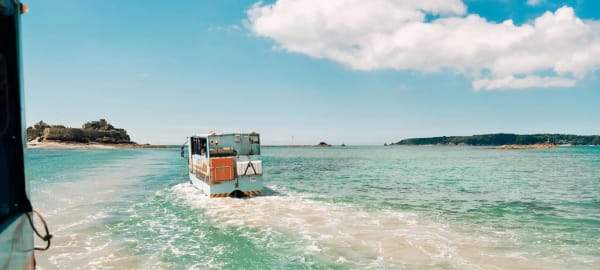
Jersey has a wide range of defensive fortifications dating from prehistoric times through to the 1940s. St Ouen’s Bay is one of the most exposed stretches of coast in Jersey and was historically vulnerable to invasion. The 18th century witnessed a period of increased political tension between Britain and France and because of its geographical location Jersey was more or less on a continuous war footing. King William IV enquired as to the state of Jersey’s coastal defences in 1831 and a report was commissioned from Lieutenant-Colonel Lewis, the Commanding Engineer in Jersey. It was found that new measures would be necessary alongside a chain of batteries and coastal defence towers (known as Conway towers), which already existed in locations along St Ouen’s Bay.
The States of Jersey ordered that work commence on the construction of new coastal defences on 3rd March 1832 and a series of towers of the English Martello pattern was built. Kempt Tower, the largest example of a Martello constructed in Jersey, was built in 1834 to the standard English East Anglian cam-shaped pattern and designed to mount one 24-pounder gun and two 24-pounder short guns. The Tower is named after Sir James Kempt, the then Master of the Ordnance, who had been one of Wellington’s generals at the Battle of Waterloo. Kempt Tower maintained a military role into the mid-19th century, as evidenced by a Royal Engineer’s Report in January 1848, which records three 32-pounder guns mounted at the Tower.
After 1850, Jersey was no longer regarded as a fortress island as hostilities with France abated and the coastal towers declined into obsolescence. In June 1902, the War Department approached the States of Jersey to enquire if they would be interested in purchasing a number of coastal fortifications. A letter from the War Office to the Royal Engineer Office in Jersey in February 1909 refers to Kempt Tower as no longer being War Department Property.
Between 1985 and 2010, Kempt Tower was used as a visitor interpretation centre to explain the natural environment of St Ouen’s Bay.




